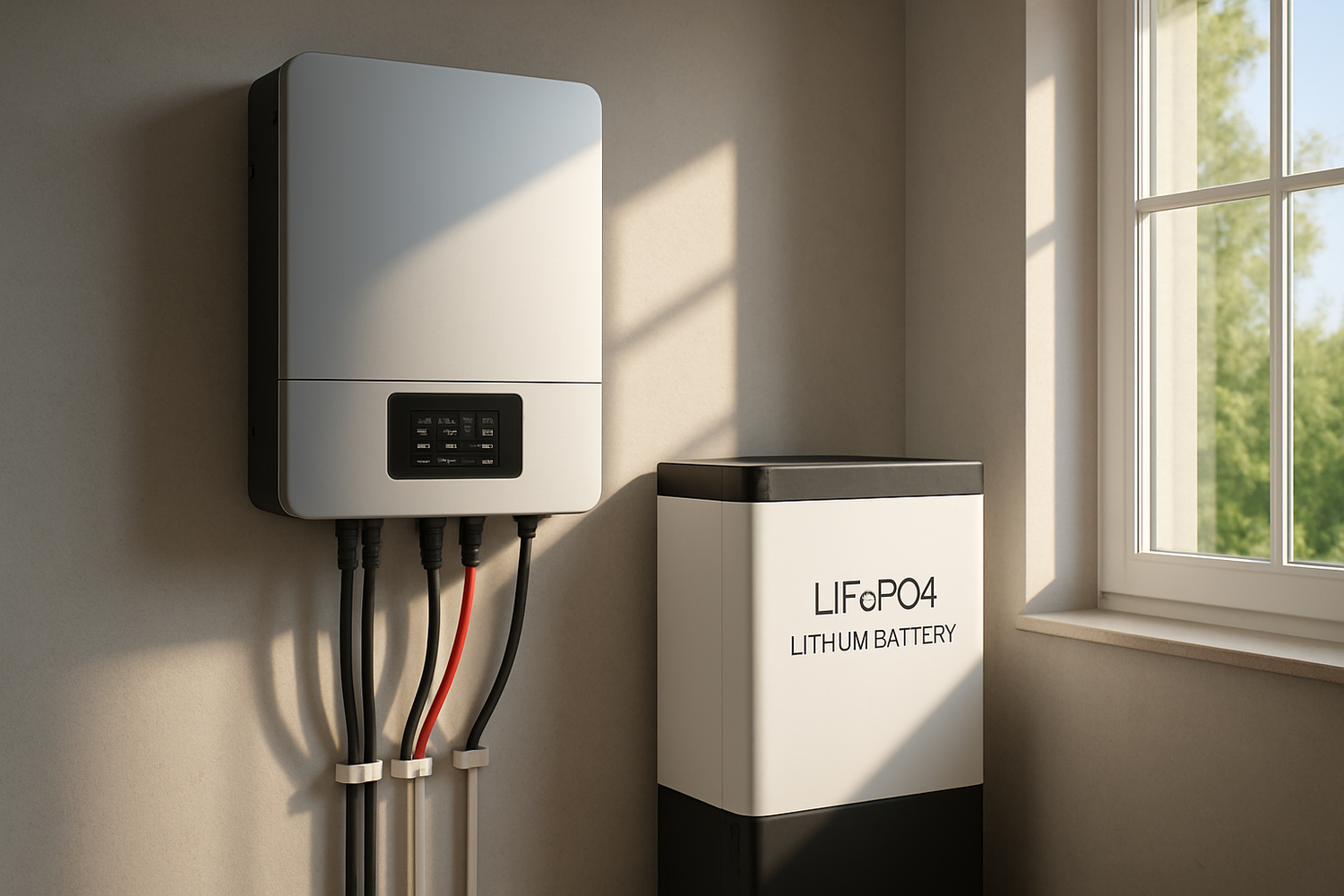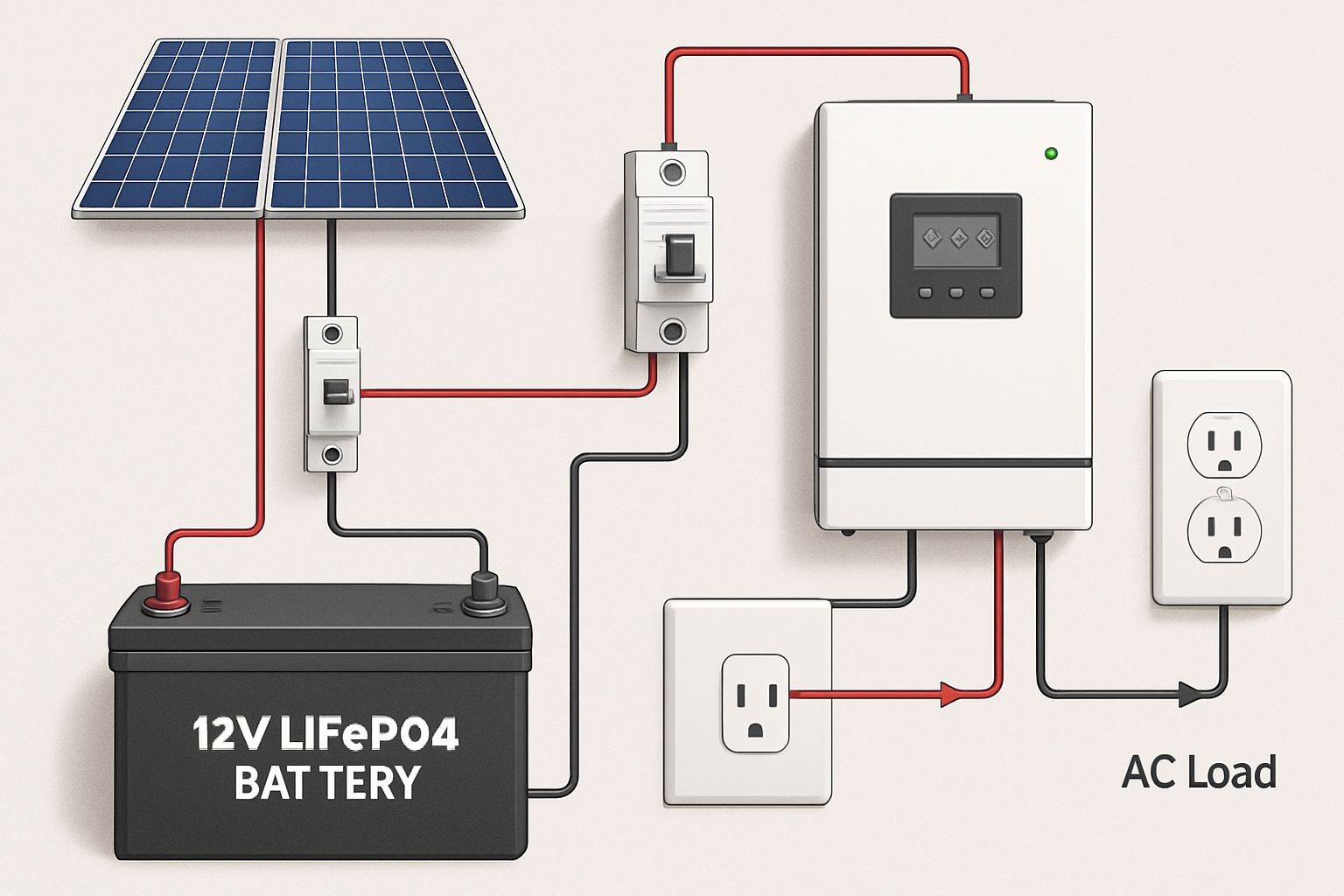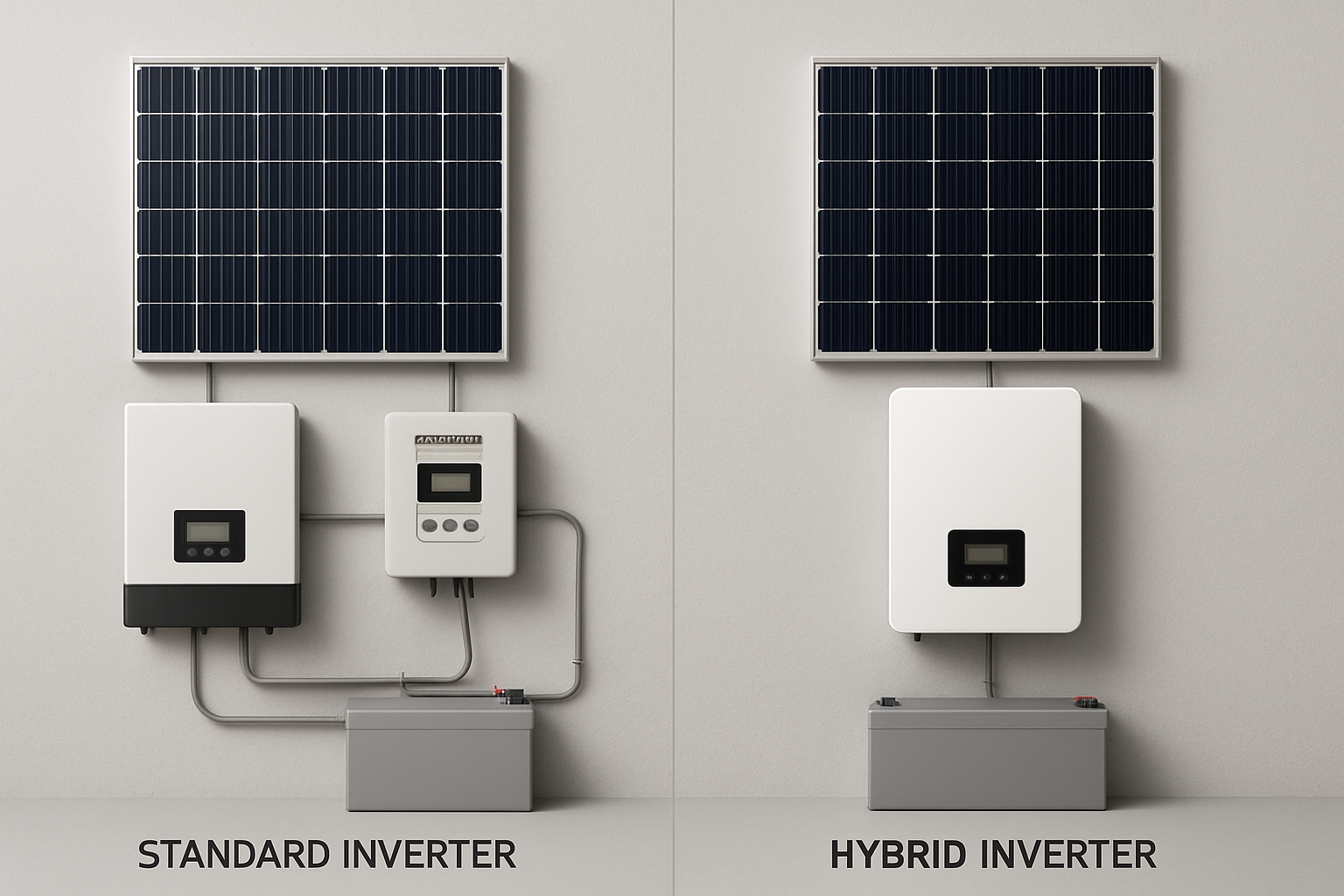A high-performance lithium battery is a significant investment in your energy independence. Yet, its lifespan and efficiency depend heavily on another critical component: the hybrid inverter. The inverter acts as the brain of your solar energy storage system, managing the flow of power between your solar panels, battery, and home. Widespread myths and misconceptions about hybrid inverters can lead to poor system performance, premature battery degradation, and even safety hazards. Understanding the facts is essential to protect your investment.
Myth 1: Any Inverter Works with Any Lithium Battery
One of the most damaging myths is that inverters are universally compatible. This assumption can lead to costly mistakes that compromise the health of your lithium battery storage. Inverter and lithium battery compatibility is not just a recommendation; it's a requirement for a safe and efficient system.
The Critical Role of Charging Parameters
Lithium iron phosphate (LiFePO4) batteries, known for their safety and longevity, have specific voltage and current requirements for charging. An inverter designed for older lead-acid batteries may not have the correct charging algorithms. This mismatch can cause overcharging, which degrades battery cells, or undercharging, which reduces your available capacity. A proper hybrid controller inverter provides precise control over these parameters, aligning with the battery manufacturer’s specifications to ensure optimal health and performance.
Communication is Key: The BMS Connection
Modern lithium batteries feature an integrated Battery Management System (BMS). The BMS is the battery’s own brain, monitoring cell temperature, voltage, and state of charge to prevent damage. An advanced hybrid inverter can communicate directly with the BMS. This closed-loop communication allows the inverter to adjust its charging and discharging behavior in real-time based on the battery's actual condition, a feature that is impossible with incompatible components. Without this link, the system operates blindly, risking the battery's long-term health.
Myth 2: Higher Power Ratings Always Mean Better Performance
It's easy to get caught up in the numbers on a specification sheet, but these figures can be misleading if not fully understood. Believing that bigger is always better can result in an inefficient and poorly optimized system.
Peak Efficiency vs. Real-World Operation
Manufacturers often advertise an inverter's 'peak efficiency,' which is typically achieved under specific, ideal laboratory conditions. However, real-world efficiency varies based on the load, ambient temperature, and other factors. A quality hybrid inverter is designed to maintain high efficiency across a broad range of operating conditions, not just at one specific point. This ensures less energy is wasted during the conversion from DC (battery) to AC (home appliances).
Idle Power Consumption Matters
A frequently overlooked specification is the inverter's idle or self-consumption. This is the power the inverter uses just to stay on, even when no appliances are running. While it may seem small, this constant drain can add up, significantly depleting your lithium battery storage over time, especially in an off-grid setup or during long periods without sun. For a deeper dive into how different factors impact system output, the ultimate reference on solar storage performance offers valuable data and insights.
Myth 3: Advanced Inverter Features are Unnecessary Gimmicks
Some users believe that advanced features are overly complex and not worth the investment. In reality, modern capabilities like grid-forming technology are becoming essential for creating resilient and future-proof energy systems.
Grid-Forming: Creating Your Own Stable Power
A standard grid-following inverter relies on the utility grid to function. If the grid goes down, the inverter shuts off for safety. A hybrid inverter with grid-forming capabilities, however, can create its own stable, independent grid. This technology is crucial for providing seamless backup power during an outage. According to research from the U.S. Department of Energy, grid-forming inverters are a key component in enabling autonomous restoration of power without human intervention, a process known as blackstart. This makes your home's microgrid more resilient. This capability, once reserved for large-scale utility projects, is now available for residential systems, offering a new level of energy security.
The Value of Smart Energy Management
Modern hybrid inverters offer sophisticated energy management platforms. These systems allow you to monitor power production and consumption, prioritize battery charging from solar, and even schedule battery use to take advantage of time-of-use electricity rates. According to a report by the International Energy Agency, smart inverter technology is a key enabler for providing voltage management and other power system support services. This level of control is not a gimmick; it's a powerful tool for maximizing your energy savings and achieving true energy independence.
Making an Informed Decision for System Longevity
Avoiding these common myths is the first step toward building a reliable and long-lasting energy storage system. The synergy between your hybrid inverter and lithium battery dictates the performance and lifespan of your entire setup. A cheap or mismatched inverter can quickly undermine the benefits of a premium LiFePO4 battery, leading to frustration and unexpected costs. By focusing on compatibility, real-world efficiency, and valuable advanced features, you can ensure your system delivers on its promise of clean, dependable power for years to come.
Frequently Asked Questions
Can I use any solar inverter with a 12v 100ah lifepo4 lithium battery?
No, it is crucial to use an inverter that is specifically designed for or has a setting for LiFePO4 lithium batteries. The inverter must be able to match the battery's required charging voltage and algorithm to prevent damage and ensure optimal performance. Always check the inverter's technical specifications for compatibility.
What happens if I use the wrong inverter for my lithium battery storage?
Using an incompatible inverter can lead to several problems, including overcharging or undercharging the battery, which reduces its lifespan. It can also cause the battery's integrated BMS to shut down frequently to protect itself. In the worst-case scenario, it could create safety risks and void the battery's warranty.
Is a hybrid controller inverter combination better than separate components?
A hybrid inverter, which combines a solar charge controller and an inverter in one unit, generally offers significant advantages. It ensures seamless communication and operation between the components, simplifies installation, and often provides more sophisticated energy management features. This integration helps prevent the compatibility issues that can arise from using separate, mismatched devices.





Leave a comment
All comments are moderated before being published.
This site is protected by hCaptcha and the hCaptcha Privacy Policy and Terms of Service apply.